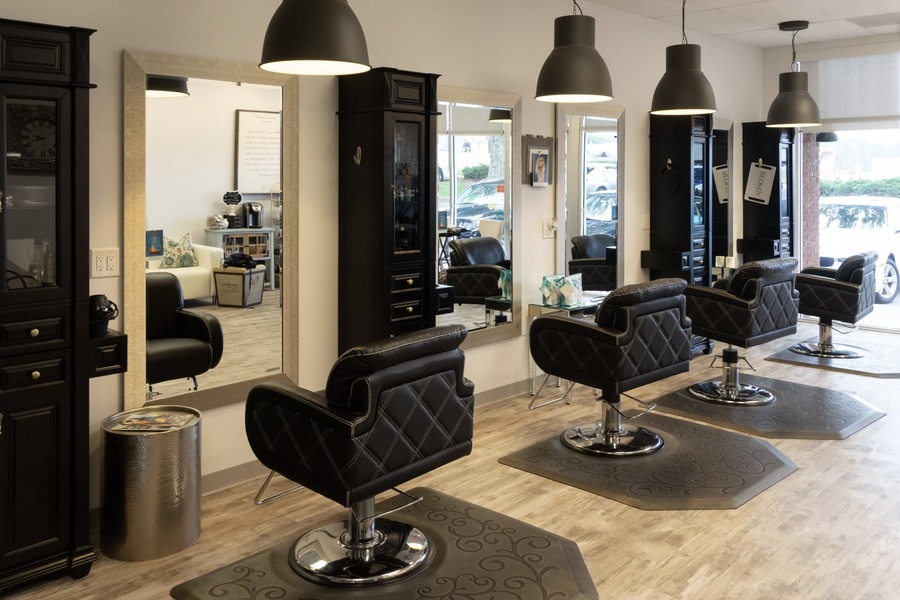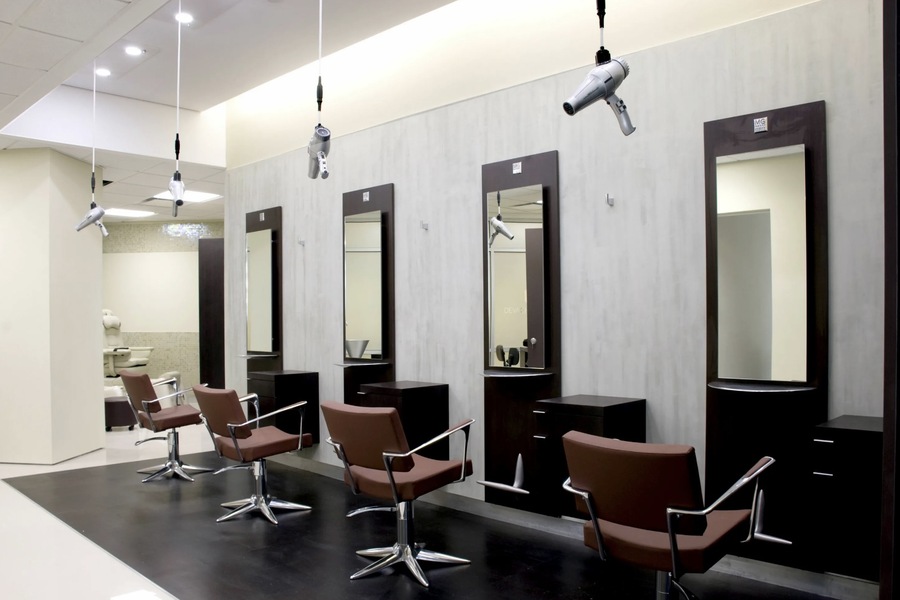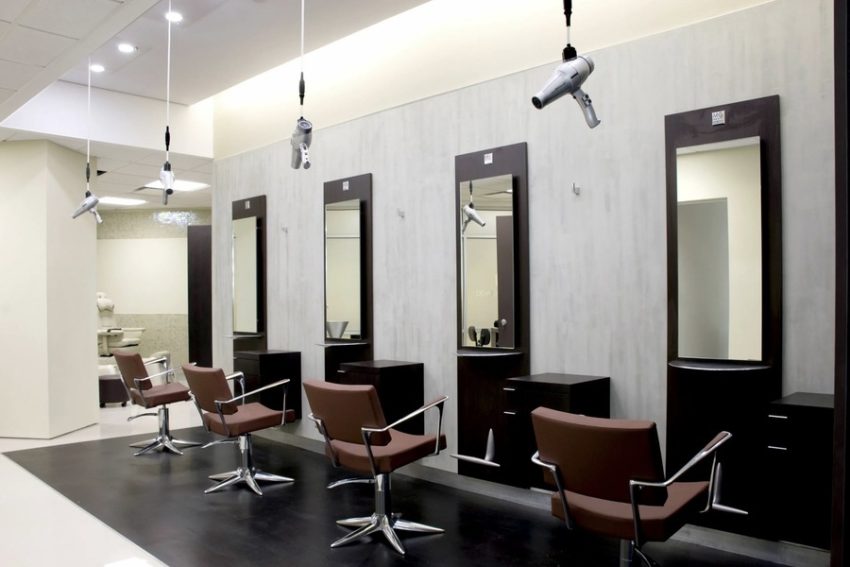In today’s competitive beauty industry, especially in dynamic regions like Dubai and the UAE, customer perception can make or break a business. While service quality and expertise are undeniably essential, the role of interior design often goes unnoticed. The design of a space significantly influences how customers feel, how long they stay, and whether they choose to return. This article delves into the multifaceted impact of interior design on customer perception, highlighting various elements such as spatial layout, lighting, color schemes, furniture, and cultural relevance, all while emphasizing their importance in the context of Dubai and the UAE.
Page Content
The Role of Interior Design in Customer Experience
Interior design encompasses the intentional organization of space, the selection of materials, lighting, color palettes, and furnishings. Each of these factors contributes to creating an environment that reflects the salon’s brand and meets customer expectations. A thoughtfully designed salon space not only facilitates functional operations but also ensures clients feel welcomed, relaxed, and valued. In Dubai, where luxury is a cultural cornerstone, clients often assess salons by the ambiance before experiencing the services themselves. Interior design, therefore, becomes a silent but powerful element in shaping the customer journey.
Spatial Layout: A Foundation for Functionality and Comfort
The spatial layout is one of the most fundamental aspects of interior design. A well-planned salon layout balances functionality for the staff with comfort and convenience for clients. Efficient zoning of areas—such as reception, styling, and treatment rooms—allows for seamless movement and minimizes waiting times.
In a bustling city like Dubai, where space often comes at a premium, smart use of available square footage is essential. Salons catering to high-end clients often include private rooms for treatments or discreet spaces for VIP clients, a feature that reflects exclusivity. Research indicates that intuitive layouts can improve service efficiency by up to 30%, directly influencing customer satisfaction.
The Power of Lighting in Shaping Ambiance
Lighting is an indispensable element of interior design that directly affects a client’s perception and mood. Natural light is highly favored for creating a welcoming atmosphere, but in Dubai, intense sunlight may require careful adjustments using sheer drapes or UV-filtering windows. Complementing natural light with adjustable artificial lighting is crucial for different treatments—soft, warm lighting for relaxation zones and brighter, focused light for styling stations.
Psychological studies reveal that proper lighting not only boosts customer satisfaction but also enhances perceived cleanliness and professionalism. A well-lit salon encourages clients to trust the space, reinforcing a sense of quality.

Color Schemes and Their Emotional Influence
The psychology of color is deeply intertwined with interior design. Color schemes can evoke emotions, influence behavior, and communicate the salon’s personality. For example, neutral tones like beige and cream convey elegance and sophistication, while pastel greens and blues promote relaxation.
In the UAE, salons often integrate colors inspired by the region’s rich culture—deep blues reminiscent of the Arabian Gulf or gold accents symbolizing luxury. A study published in the Journal of Consumer Psychology confirms that color influences purchasing decisions and overall satisfaction. Thus, choosing a cohesive and culturally resonant palette can leave a lasting impression on clients.
Furniture: Balancing Aesthetics and Functionality
Furniture plays a dual role in interior design: it contributes to the visual appeal of the space while ensuring comfort and functionality. Ergonomically designed chairs, adjustable treatment beds, and sleek yet practical workstations are essential for both client and staff comfort.
In Dubai, where expectations for opulence are high, furniture choices must align with the salon’s brand positioning. Plush seating in waiting areas, marble-topped counters, or high-end styling chairs can communicate a commitment to luxury. A well-curated selection of furniture not only elevates the aesthetic but also enhances the overall customer experience.
Cultural Sensitivity in Design
Designing for a multicultural clientele, as is common in Dubai, necessitates a nuanced understanding of cultural preferences. Many UAE clients appreciate elements of Arabic heritage—such as intricate geometric patterns, mashrabiya-style screens, and gold accents. At the same time, the design must appeal to the city’s diverse expatriate population by incorporating global trends.
The key lies in achieving a balance: integrating cultural motifs without overwhelming the modern aesthetics expected by international clients. This approach ensures inclusivity and fosters a sense of belonging among a varied clientele.
Acoustic Considerations: The Role of Sound
Noise levels within a salon can significantly affect customer comfort. Excessive chatter, loud music, or the hum of equipment can detract from the overall experience. Acoustic planning, such as soundproofing treatment rooms or installing noise-dampening materials like padded walls and carpets, helps create a serene environment.
Dubai’s clientele often includes individuals seeking an escape from the city’s fast-paced lifestyle. Offering quiet zones or spaces with soothing music can elevate the customer experience. Studies show that environments with controlled noise levels lead to greater customer retention and satisfaction.
Cleanliness and Hygiene: A Design Priority
Cleanliness is a non-negotiable aspect of customer perception, especially in a beauty salon where personal care treatments are performed. Interior design can support high hygiene standards by incorporating easy-to-clean surfaces, seamless flooring, and clutter-free layouts.
In Dubai, strict regulations govern hygiene in salons, making adherence not just a choice but a legal obligation. Thoughtful design choices, such as the use of antibacterial materials or touchless fixtures, ensure compliance while reassuring clients of the salon’s professionalism.
Branding Through Design
A salon’s interior design is often the first point of contact with its brand identity. The space should visually reflect the salon’s core values, target audience, and unique selling points. In a competitive market like Dubai, where salons often target a luxury segment, branding through design becomes paramount.
For instance, high-end salons may use marble finishes, chandeliers, and minimalist decor to communicate sophistication. Conversely, salons targeting a younger demographic might opt for vibrant colors, modern furniture, and Instagram-worthy decor. Consistency in branding across all design elements enhances recognition and loyalty.
Integrating Technology for Modern Clients
As Dubai positions itself as a hub for innovation, the integration of technology into interior design has become a growing trend in beauty salons. Features such as digital booking kiosks, personalized lighting systems, and virtual consultation screens not only modernize the space but also enhance customer convenience.
For tech-savvy clients, these additions signal a forward-thinking approach, boosting their confidence in the salon’s services. Furthermore, interactive displays showcasing service menus or portfolios can engage clients during their visit, adding to the overall experience.

Privacy and Exclusivity
In a region where discretion is often valued, the design of beauty salons must prioritize client privacy. Partitioned spaces, private rooms, and thoughtful layouts create an environment where clients feel at ease during personal treatments.
In Dubai, where VIP services are common, ensuring privacy for high-profile clients can be a significant differentiator. Salons that successfully incorporate exclusive spaces into their design are more likely to attract premium clientele and foster loyalty.
Olfactory Elements: Creating a Signature Scent
While visual and auditory elements dominate design discussions, olfactory factors also contribute to customer perception. Pleasant aromas can create a positive first impression, enhance relaxation, and reinforce brand identity. Subtle fragrances in treatment rooms or reception areas, such as lavender or sandalwood, can enhance the ambiance.
However, it’s crucial to strike a balance. Overpowering scents can lead to discomfort or even deter clients. In Dubai’s luxury market, salons often invest in signature scents as part of their branding efforts.
The Waiting Area: Setting the Tone
The waiting area is a salon’s first opportunity to impress clients. Comfortable seating, a clean environment, and thoughtful amenities such as refreshments or reading material contribute to a positive impression.
In Dubai, where clients often expect a premium experience, offering touches like phone charging stations or complimentary beverages can elevate the waiting area’s appeal. A well-designed reception space reassures clients of the salon’s attention to detail and commitment to quality.
Conclusion
Interior design is far more than just an aesthetic choice—it is a strategic tool that shapes customer perceptions and experiences. From spatial layout to lighting, every detail plays a role in determining how clients view and interact with a salon. In Dubai and the UAE, where the beauty industry thrives on luxury and innovation, the importance of thoughtful design cannot be overstated.
Investing in purposeful and client-centric interior design allows salons to not only meet but exceed customer expectations. By aligning design choices with operational efficiency, cultural relevance, and modern trends, beauty salons can create spaces that leave a lasting impression, ensuring customer satisfaction and loyalty in an increasingly competitive market.
Baseball fan, coffee addict, audiophile, hand letterer and front-end designer. Performing at the crossroads of design and sustainability to develop visual solutions that inform and persuade. My opinions belong to nobody but myself.


